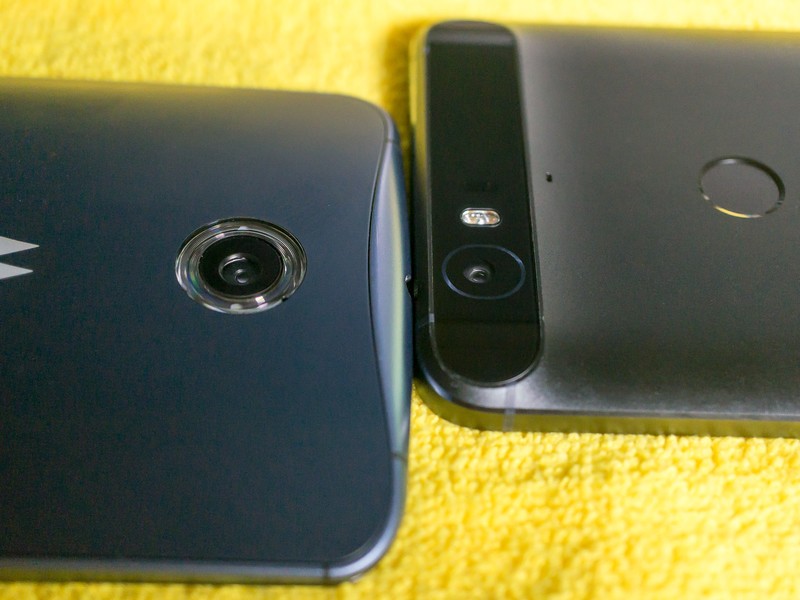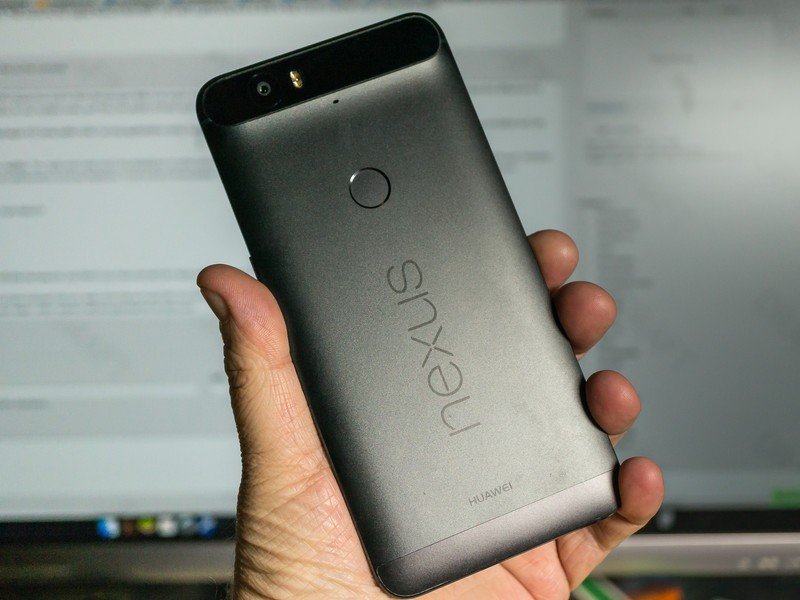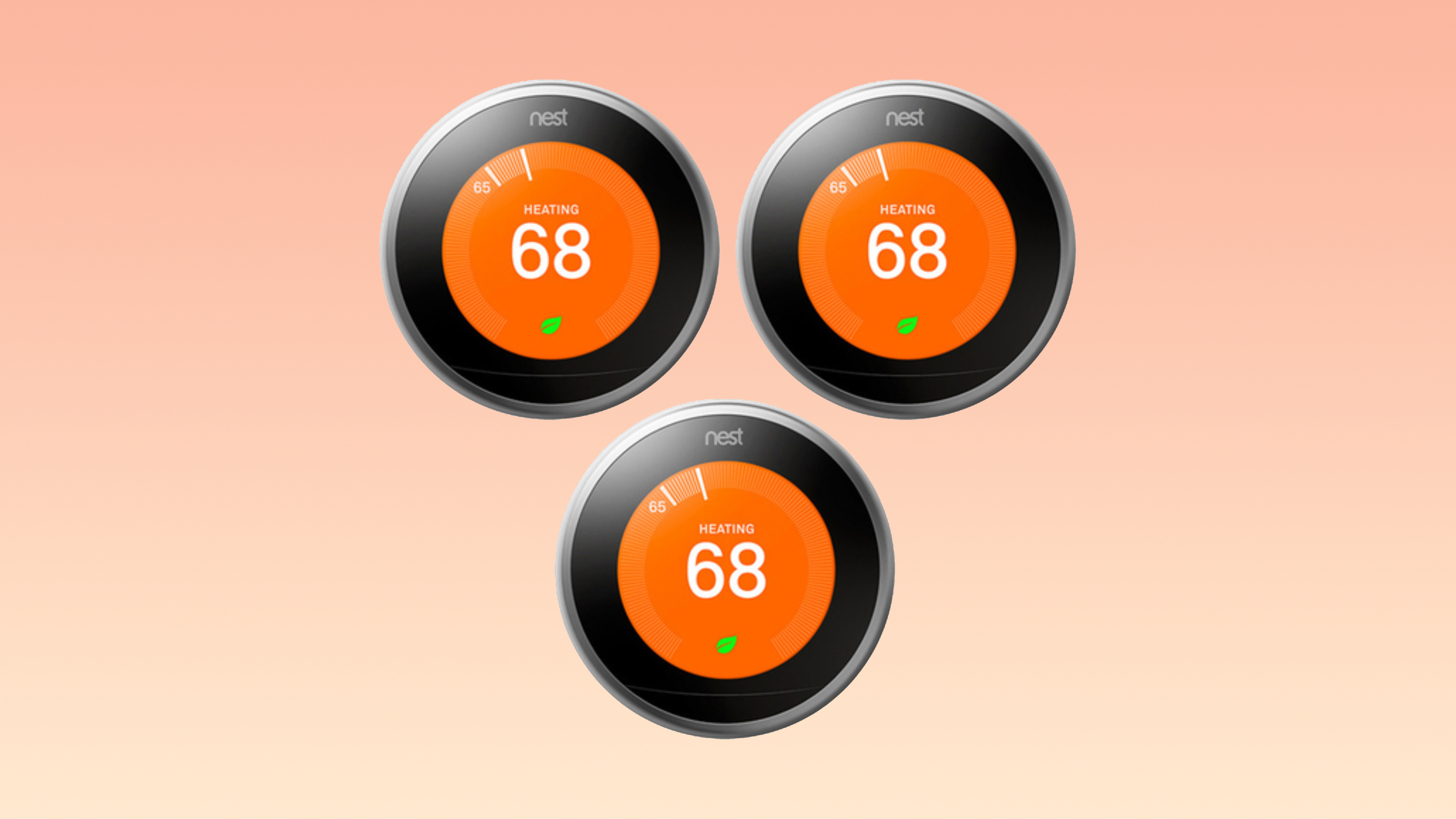Nexus 6P versus the Nexus 6

The new Nexus 6P is one of the best Android phones you can buy today. Premium to the nth degree, and hundreds of dollars less than comparable phones you'll find on the shelves or online stores. It's the first Nexus phone that comes without a bunch of compromises. I love mine.
But there's another high-end Nexus phone that's been around for a while, and people who have one still love it. That would be the original Nexus 6 from 2014. Bigger, better built, and running the same exact software as well (or better in some cases) as the latest from Google.
One of the most popular questions I get from people who know I'm a fan of the Nexus program is about which big Nexus is better — the Nexus 6 or the Nexus 6P. That's not an easy one to answer, so we had to take a good long look at both to help everyone decide.
All about the hardware

Here's where the differences lie. And they go deeper than one having a fingerprint scanner and the other not having one. The two phones are built very different and feel very different when you're holding and using them.
The Nexus 6P is insanely thin, and no it won't bend.
The Nexus 6P is insanely thin at 7.3mm (just over one-quarter of an inch) and you notice just how thin it is as soon as you pick it up. It's also more narrow at 77.8 mm (about three inches) wide. It's not easy to find a Nexus 6P in the wild where you can fondle it, but if you take a trip to your local Verizon store, you can grab a Note 5 or an iPhone 6s Plus and see how a tall, narrow and thin phone feels in your hands. Manufacturers have went narrower for a reason — it fits in an average-sized hand a bit better than wider phones do.
Because it's so thin, it was inevitable that someone took video of it bending. Don't put much thought into that — it doesn't bend easily. There are also videos out there of folks measuring how much force is required to bend the 6P, but they are widely ignored by the folks who need to think it bends too easy. Undoubtedly, those people will be in the comments below. All I can say is I'm not gentle with phones that I didn't spend any money on. I've sat down on this company phone with it in my back pocket, I've flexed it until i thought the glass would break, and I've dropped it several times. It looks fine, and is still straight.
Be an expert in 5 minutes
Get the latest news from Android Central, your trusted companion in the world of Android

The Nexus 6 is as different as can be here. It's not thin or narrow — 10 mm thick and 83 mm wide — and it feels pretty substantial in your hands. I'm not about to say it's too big, but to me it was at the very edge of comfortability. Any wider and I'd have to two hand it for everything. I'm not a basketball player, but I have large, meaty and strong hands. People with smaller hands or delicate, nimble hands do have problems using it with one hand. If it were more narrow, they might not. You have to decide how big is too big, but know that width plays a really important part here.
It's also not going to bend under most sane circumstances. I can flex my Nexus 6. I could probably bend my Nexus 6 if I were an idiot and wanted to bend it for YouTube views. But it's not going to happen by accident.
| Category | Nexus 6P | Nexus 6 |
|---|---|---|
| OS | Android 6 | Android 6 |
| CPU/GPU | Qualcomm Snapdragon 810octa-coreAdreno 430 GPU | Qualcomm Snapdragon 805quad-coreAdreno 420 GPU |
| Display | 5.7-inch AMOLED1440x2560 (518 ppi) | 6-inch AMOLED1440x2560 (493 ppi) |
| Battery | 3450 mAh | 3220 mAh |
| Removable battery | No | No |
| Charging | Rapid charging (USB Type-C) | Turbo charge (microUSB) |
| Wireless charging | No | Qi |
| Fingerprint sensor | Yes | No |
| Rear camera | 12MP, 1.55µm pixel sizelaser autofocus, dual-LED (dual tone) flash | 13MPOIS, autofocus, dual-LED flash |
| Front camera | 8MP | 2MP |
| Storage | 32/64/128GB | 32/64GB |
| SD card | No | No |
| RAM | 3GB | 3GB |
| Size | 159.3 x 77.8 x 7.3 mm | 159.3 x 83 x 10.1 mm |
| Weight | 178 g | 184 g |
Both phones have dual front-facing speakers. Both phones have a volume and power button on the right-hand side. Both phones are fully supported by Google and will get updates as needed, when needed. Let's look at some other differences.
The screen

I am not extremely picky about the screen on my phone, but I am extremely picky about the screen on my phone, all at the same time. Both the Nexus 6 and the Nexus 6P have an AMOLED panel, which makes 90 percent of the time I'm looking at them better, but also makes them horrible when I'm reading an ebook. I like AMOLED screens, but only 90 percent of the time. First world problems and all that.
Clearly, the screen on the Nexus 6P is better.
Clearly, the screen on the Nexus 6P is better. Let's say that up front. Google made sure we all know that it's using the latest and greatest AMOLED panel from Samsung, and to me the screen is excellent. I have no issues using it outdoors in the noon sun, and haven't seen any burn in yet. It was a little blue at first, but that has settled down with some use and the colors look good (though still blue because AMOLED and the way it does white) and I'm completely satisfied with the display.
I also think the display on the Nexus 6 was mostly fine. It's difficult to see in the sun, and it's not quite as sharp (it's also slightly bigger, so less dense) as the display on the 6P. This means it's a little worse during my 10 percent reading time, but chances are you'll be OK with the display on the Nexus 6, until you need to go outside.
The camera

Here's where things are wildly different. The camera on the Nexus 6 is adequate. You can take a picture and share it to Facebook or Google+, and it will look good most of the time. You can even take a picture that would look good when printed as a 3 x 5 sometimes, depending on the light and how much you wanted to fiddle with things. It's a middle-of-the-road camera that some people can use and get spectacular photos with, but most of us will get results that are just "good enough."
Not so with the Nexus 6P.
If specs don't tickle your fancy, the results from the Nexus 6P camera speak for themselves.
Behind the hump that so many people love to hate, the 12MP, laser autofocus, dual-LED flash 1.55µm pixel size camera is a joy to use, and fun to type because I get to use the µ symbol. If seeing specs listed doesn't tickle your fancy, the results from the Nexus 6P camera speak for themselves.
I've used a lot of smartphones with the "best" camera. I get slightly better results when fiddling with manual modes on the LG V10 than fiddling with Manual Camera on the Nexus 6P. I get slightly better results when I take my time in the best lighting with the Galaxy S6 edge than I do with the Nexus 6P. I get slightly better results in low light with the Nexus 6P than I do with either the V10 or the S6 edge. Most importantly, I get really nice results from any of these cameras, in almost any conditions. This is the first time we can say thing about a Nexus phone.

You would probably be satisfied most of the time with the camera on the Nexus 6. You will love the camera on the Nexus 6P.
Other hardware differences worth noting

The Nexus 6P does not have wireless charging. This is worth putting in bold. Yeah, I've heard the reasons — metal back, USB Type-C, rapid charging and all the rest. All valid reasons, but they still don't change the fact that the last generation had the feature, and we were told to love and embrace it, then it was removed. If you're like me, and you loved and used the Qi charging feature of prior Nexus phones, you will miss it on the 6P.
The Nexus 6P does have a fingerprint scanner, and Nexus Imprint software to make use of it. And it works really well. There's a dimple on the back where the scanner lives, and it reads fingerprints quickly and accurately. Even hard, calloused prints on stumpy fingers like mine. Marshmallow has a new set of APIs that developers can leverage to include fingerprint authentication in their apps, so the feature will get even more useful.
The external speakers are better on the Nexus 6 than they are on the Nexus 6P. Headphone audio on either is adequate, but not great.
The Nexus 6 gets better reception than the Nexus 6P. It's noticeably better on the edge of T-Mobile service.
The Nexus 6P has a great 8MP front facing camera. The Nexus 6's 2MP front-facing camera is terrible when compared to it. If you love you some selfies, go 6P.
You can buy a Nexus 6P with 128GB of storage. The Nexus 6 tops out at 64GB.
The Nexus 6P has a working RGB notification LED. The Nexus 6 has one, too, but you need to be rooted and use an app like LightFlow to get it enabled.
Software

This is easy. Both the Nexus 6 and the Nexus 6P run Android 6.0 Marshmallow, with the same default apps and the same default features. The only difference is that the Nexus 6P has a fingerprint scanner, so the software to use it is present.
But there's more to the story when you're actually using these phones.
During normal, day-to-day boring stuff like checking mail or messaging, you won't see much difference between the two. Both are quick and fluid, and both are a joy to use. That changes when you get into heavy, CPU-taxing apps that make use of, or don't make use of, multiple cores and threads.
The Snapdragon 810 in the Nexus 6P is a product that was launched because people designing and making smartphones decided that all the new ones had to be 64-bit. The cores themselves are standard ARM big.LITTLE reference designs. There's nothing worng with this on the surface, but CPUs using Qualcomm's custom Krait cores, like the Nexus 6's Snapdragon 805, fare much better during operations that tax a single core. The Krait 450 cores in the Nexus 6's CPU include three way decode and four way out of order command execution. This means the Snapdragon 805 executes commands in an order that is the most efficient, versus executing them in the order they were recieved. It can also execute more than one command per cycle because of the way it can allocate silmutanious instructions.

In English, this means that the custom CPU Qualcomm built in 2014 (Snapdragon 805) runs single core tasks much better than the CPU they built in 2015 (the Snapdragon 810). You'll notice the difference if a developer hasn't optimized their application to use multiple cores, and there are plenty of those apps out there.
On the other hand, the Nexus 6P's Snapdragon 810 fares better when running applications using multiple cores, and get's better battery life from its big.LITTLE design. Things like 3D games run better and use less juice on the 6P.
For most of us, the differences here are neglible. You really won't see much of a slowdown on either phone, but the battery use differences may be worth considering. This is worth talking about though, because some of us want to squeeze the maximum performance out of our hardware. If you're one of those people, you need to decide which is more important to you — single core performance or multi-core performance.
The rest of us don't need to worry too much about it.
Which phone is better?

In the end, I have to make a choice, and throw it out there. That's hard. I still like the Nexus 6, and think if you have one and are happy with it, you should keep it for another year.
If you're shopping for a new phone, and have decided that you need more Nexus in your life, buy the Nexus 6P. It handles better, has a better screen, has a much better camera and can take advantage of fingerprint authentication. It's also a year newer, which means it will be supported for an extra year.
You can sell your Qi chargers on eBay.

Jerry is an amateur woodworker and struggling shade tree mechanic. There's nothing he can't take apart, but many things he can't reassemble. You'll find him writing and speaking his loud opinion on Android Central and occasionally on Threads.
